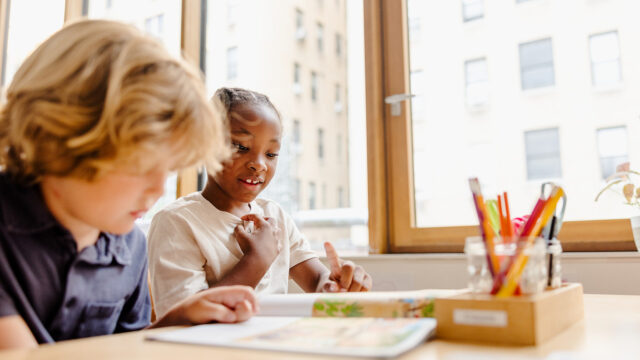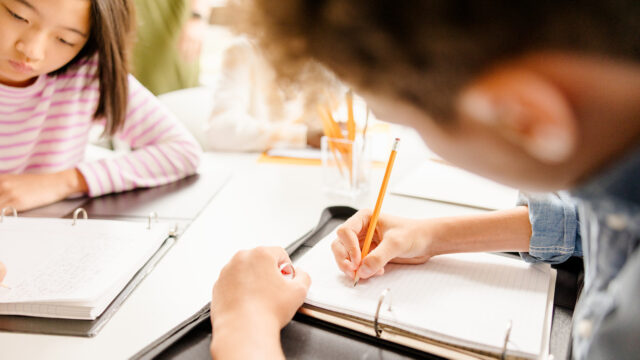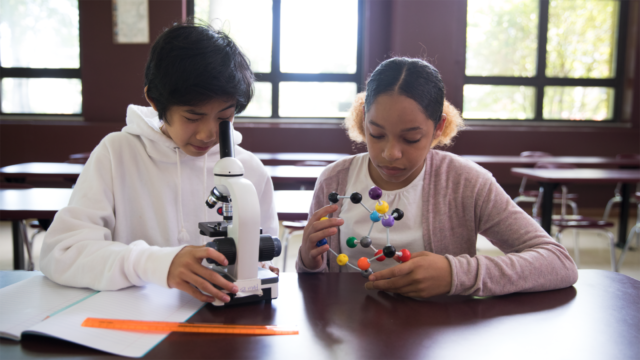
Literature can often inspire creativity. This is why when assessing students on their novel readings, I lean towards book projects instead of traditional reports. From videos to online comic strips, there are many ways students can share what they've learned from a book. From my experience, the astounding projects my students have created showcased their understanding and creativity.
If you're looking to revamp the typical book report, try these fun book project ideas for middle and high school students. This collection of end-of-novel projects will engage your 6-12 grade students in exploring literary elements like plot, theme, and character. Some of these activities can even be modified to work for younger students.
Note below are potential texts you can use, but always check with your school or district for recommended resources.
End-of-novel project ideas your students will love
1. Make a movie trailer
Many best-selling novels are adapted and turned into feature films. So why not ask students to take their book report and turn it into a movie trailer? Invite students to get into groups and write a short summary of the novel they've just read. Then ask students to use their summary to pen a script for a movie trailer for the book. The movie trailer should showcase major storylines of the novel and tease the plot of the novel. In their groups, students will decide who plays what part in the movie trailer. Perhaps one student can be the movie trailer narrator, while another plays the main character. Students can film their move trailer in class using your school's resources, such as a laptop or camcorder. Later, students can edit their movie trailer using video editing software, like Apple iMovie.
Students' movie trailers can explore other elements of the story besides plot, such as:
- Character: Students can conduct a character study in movie trailer form and dive into a character’s traits, personality, and development throughout the book.
- Theme: Students can create a movie trailer that explains the themes of the story and show various visual examples of the theme. For example, to explain the theme of materialism in The Great Gatsby, students can film a scene of a fancy party to show how the characters often chased after wealth and status.
- Setting: Students can make a movie trailer about the setting and background history related to the book. For example, if students are reading To Kill A Mockingbird, one video could compare and contrast major trials that occurred during the 1930s with the trial in the novel, or cite evidence from the text about how racism manifested itself in the legal proceedings.
As long as you have a clear set of expectations (a detailed rubric worked best for me), you can cater movie trailers to various topics around literature.
2. Create an online comic strip
Another way to reinvent the traditional book report is asking students to create their own digital comic strip. Before students start designing their comic strip online, they can mock up a comic strip on paper. You can ask students to sketch a scene from the novel and include dialogue using speech bubbles. Then they can bring their comic to life online by using easy-to-learn programs such as Pixton.
I had students create a comic strip after every chapter and students had to summarize what happened in the chapter. Students were able to reaffirm what they had read by creating a visual overview. Plus, students loved to share their finished products, which kept everyone up to date on what was happening in the book.
3. Construct a diorama
You may remember dioramas from when you were a younger. I created one on dinosaurs and it's been stuck in my memory ever since. This classic project still resonates with students today. For those of you unfamiliar, a diorama is a scene created inside a cardboard box. You could assign every student in the class a major scene from the book and then have them present it to the class with a diorama. Or you can ask students to choose a scene they would like to depict in their diorama. It’s possible to integrate a writing component, too. Have students write a short description of their scene as well as an explanation on how this scene relates to the overall theme of the novel.
4. Piece together a scrapbook
Scrapbooks are a great way to document memories, but also a engaging way for students to showcase their understanding of a book. Ask students to create a scrapbook from a point of view of a character in the novel or to create a scrapbook that captures the novel's theme. You can give students the choice of creating a traditional scrapbook on paper or a digital one online. If students choose a traditional scrapbook, they can can glue on photographs and memorabilia (like post cards or ticket stubs) or add words (like song lyrics or quotes) and embellishments (like stickers) to their book. Students who chose to make a digital scrapbook can use online tools like Canva to piece together their project.
5. Produce a newspaper
Have students produce a newspaper to share the scoop on the novel they've just read. Prior to starting this book project, students have examine the layout of the front page of a newspaper, for example the lead headlines, teasers, advertisements, and photographs. Then ask students to create the front page of a newspaper for their novel. Students can work individually, in pairs, or small groups for this project. Students can then decide what key conflict or event in the novel should be highlighted as front page news and write a newspaper article on it. Students would need to consider what eye-catching headline to use, photographs to feature, and other events to tease on the front page. You can provide students with a printed or online newspaper templates to help them design their newspaper. Afterwards, students can share their finished newspapers with the class. An alternate take on this project is to have the whole class create an entire newspaper on the novel, where each group creates different articles, comics, advertisements, advice columns, and announcements based on the events in the book.
This was a winning book project with my students, who created their own newspaper while reading The Outsiders. Students also had the freedom to design their own newspaper around various writing prompts, character descriptions, literary term analysis, and so on. The possibilities are endless
6. Conduct an author study
Students can develop a deeper understanding of a work or literature by conducting an author study. An author study is an exploration of a single author's work. Students can read multiple books from that author and analyze the author's writing style as well as reoccurring themes in the author's work. During an author study, students can also dig into the author's personal life and how it could've have influenced their work. After all, the author’s personal experiences tend to affect their written work in a multitude of ways. Charles Dickens’s classic Great Expectations, for example, contains many events, characters, and themes from his own life that he shares through the protagonist. You can kick off an author study at the beginning or end of a book unit.
Here’s what worked for me. I provided students with a checklist of author information they had to research. It was up to them how they were going to display their findings. This allowed student choice while still meeting those benchmarks. Students performed skits, created collages and paintings, and much more. At the end of the project, we put all the projects in a circle and had a gallery walk where students viewed each other’s work.
7. Put on a play
What would be more engaging to students: writing a book report on Romeo and Juliet or creating a modern-day version of the story and acting it out? Ask to students to take a classic work of literature and create a modernized play of it. In groups, students can choose their favorite scene from the novel they've read and rewrite it so it is set in present day. Once students have written their screenplays, you can give them the opportunity to act out their version of the classic novel they've reworked.
8. Make a tableau
You may have heard of a tableau—which is a term for a frozen scene, where a group of people don’t speak or move while representing a scene from a story. Consider asking students make a tableau instead of writing a traditional book report.
How would students create a tableau? Here’s the process:
- Two students hold up a sheet of paper or a curtain. Behind it, a group of students pose as characters from a scene in the book.
- Then, the “curtain” drops, and the rest of the class views the freeze-frame and tries to identify it as it relates to the book.
You can make this more complex by integrating costumes, which can appeal to students who are interested in fashion or theater. You can also add a writing component that describes the process of creating the scene. Alternatively, students can record the relevance of the scene to the entirety of the book in writing.
Fun book projects motivate students to read and learn
There is always a place for the traditional book report, but I also believe that book projects are an engaging way for students to connect with literature. When students have the opportunity to take risks, explore interests, and create, they are more motivated to learn.
This article was adapted from a blog post initially developed by the education technology company Classcraft, which was acquired by HMH in 2023. The views expressed in this article are those of the author and do not necessarily represent those of HMH.
***
Find more lesson plans and classroom resources on Shaped.
Be the first to read the latest from Shaped.














